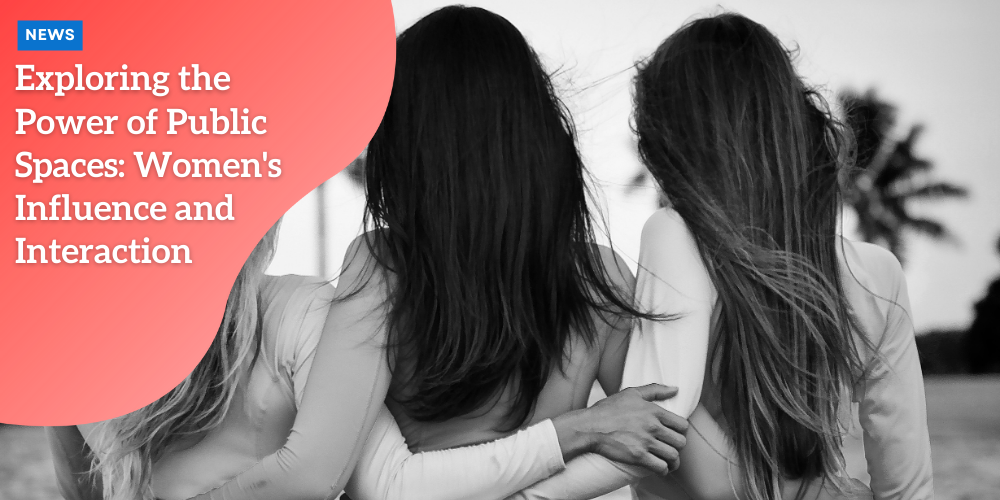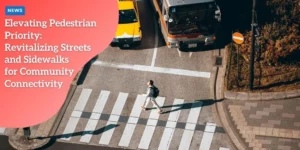Understanding Women’s Influence in Public Spaces: A Comprehensive Exploration

Women: The Unseen Architects of Our Public Spaces
Imagine walking through a vibrant city square, the sound of footsteps mingling with the chatter of locals.
Anúncios
Perhaps there’s a serene park tucked away in the midst of the hustle and bustle, offering a peaceful escape, or a bustling marketplace that breathes life into the surrounding streets.
These public spaces are not merely areas where people pass through; they are dynamic, living, and evolving environments that shape the social, cultural, and economic fabric of our communities.
However, there is an often-overlooked group whose impact on the design, use, and transformation of these spaces is profound: women.
Anúncios
The Indelible Mark of Women on Public Life
Women’s influence on public spaces has been significant but frequently goes unnoticed.
The role women play in shaping and occupying these spaces extends far beyond mere passive participation.
Across the globe, from the vibrant souks of Morocco to the meticulously designed urban parks of Copenhagen, women are not just passive users of public spaces.
Anúncios
They actively transform and redefine these areas, creating environments that reflect their needs, aspirations, and experiences.
Women are integral to the social life that takes place in these shared spaces, and their presence, both visible and invisible, helps to shape everything from urban planning decisions to the types of events and activities hosted in these spaces.
The importance of acknowledging and celebrating the contributions of women in the public realm cannot be overstated.
Women often occupy public spaces in unique ways that highlight their role in shaping how these environments evolve.
Whether it’s the woman arranging flowers in a public garden, the group of friends meeting at a café, or the community leader advocating for safer public transport routes, women play a pivotal role in making public spaces vibrant, welcoming, and meaningful.
Building Inclusivity: Safety, Comfort, and Community
For public spaces to be truly inclusive, they must reflect the diverse needs of everyone who uses them.
This is where the specific needs of women become essential to consider.
For women, safety is a primary concern when navigating public spaces.
Well-lit pathways, secure and visible transit stops, and strategically placed surveillance cameras can significantly impact a woman’s sense of security as she moves through urban landscapes.
These measures can make the difference between a public space being perceived as welcoming or intimidating.
Comfort is another crucial aspect that enhances the public space experience for women.
Well-maintained restrooms with proper hygiene facilities, including baby-changing stations, are essential for women, especially those with young children.
Ample seating areas provide opportunities for women to relax, chat with friends, or simply enjoy the environment.
These simple, thoughtful touches not only make public spaces more functional but also help to create a sense of safety, relaxation, and community.
However, inclusivity goes beyond addressing the physical needs of women.
Public spaces should also support shared interests and activities that foster connections among diverse groups of people.
Spaces that cater to these interests help women form bonds, share knowledge, and build relationships.
For example, community gardens offer women the chance to connect over gardening, while exercise programs designed specifically for women help promote physical health and well-being.
These types of spaces and activities create a sense of camaraderie, allowing women to engage with their communities in meaningful ways and contribute to the collective vitality of the environment.
Women as Champions of Community
Women are often the unsung champions of community building within public spaces.
Their nurturing instincts and attentiveness to the needs of others often lead them to create spaces that foster connection and intergenerational relationships.
Think of the community space where women organize events, provide support for local charities, or simply offer a warm space for people to gather.
Whether through informal neighborhood get-togethers or more formalized efforts such as hosting market events, women are often the ones spearheading initiatives that bring people together.
These actions extend beyond the immediate benefits to the people involved.
They create a ripple effect within the community, strengthening social ties and fostering a greater sense of belonging.
It is the women who advocate for spaces that encourage community members, of all ages and backgrounds, to engage with one another in meaningful ways.
The local bakery where seniors meet each morning, the playground adjacent to a café where mothers chat while their children play, or the local market that doubles as a social hub—all these are examples of spaces shaped by women’s influence.
These spaces are where communities flourish, forming the very heart of public life.
Modern Muses: From Instagrammable Spots to Everyday Caretakers
The role of women in public spaces is not limited to traditional functions.
With the rise of social media, the concept of “Instagrammable” locations—visually appealing spots that draw crowds for photos and social media sharing—has become increasingly important in urban design.
Women, often with their keen sense of aesthetics, are drawn to these spaces, influencing the design choices made by city planners, architects, and local business owners.
A well-designed public space that attracts social media attention can boost local businesses, promote tourism, and enhance community pride.
Furthermore, the often invisible work of maintaining public spaces is also carried out by women.
Caretakers, event organizers, street vendors, and others, many of whom are women, ensure that these spaces remain clean, functional, and inviting.
Whether it’s a street vendor offering homemade snacks, a local artist organizing community events, or a cleaner keeping the streets spotless, women play an essential role in sustaining the public space experience.
Their work ensures that these spaces continue to thrive as hubs of activity, social interaction, and connection.
Designing with Women in Mind
Designing public spaces with women’s needs in mind is crucial for creating environments that are accessible, inclusive, and supportive of a wide range of activities and users.
Engaging women in the planning process allows urban designers and planners to gain insights from a diverse range of perspectives, ensuring that the space is tailored to meet the needs of all community members.
For instance, creating well-lit walking paths and safe, easily accessible transit stops can provide women with the freedom to move about without fear of harassment or danger.
Providing spaces for children to play in proximity to seating areas allows mothers to watch their children while socializing with friends.
Designing public spaces that reflect the unique contributions of women can also be an opportunity to celebrate their cultural and artistic expressions.
Community art installations, for example, can showcase local female artists and highlight their contributions to the cultural landscape.
These types of spaces not only acknowledge women’s creative contributions but also empower them by giving them a platform to share their work with the community.
A Call to Action: A More Inclusive Future for Public Spaces
As we continue to shape the public spaces of tomorrow, we must recognize the invaluable contributions women make to these environments.
From the subtle ways in which they influence urban planning decisions to their active roles as community organizers and caretakers, women are the unseen architects of our shared spaces.
Acknowledging and celebrating their contributions is not just a matter of fairness; it is essential for creating vibrant, inclusive spaces that benefit everyone.
To build more inclusive public spaces, we must ensure that women’s voices are heard in the planning and development process.
We must advocate for designs that reflect the needs of women, from safety and comfort to opportunities for social interaction and creativity.
By actively involving women in the design and development of public spaces, we can create environments that are welcoming, empowering, and enriching for all members of the community.
As we look to the future, let us continue to amplify the voices of women and ensure that public spaces remain dynamic, inclusive, and vibrant hubs of community life.
Only by acknowledging the pivotal role women play in shaping the social, cultural, and economic landscape of our cities can we hope to build a more equitable and harmonious world for everyone.





